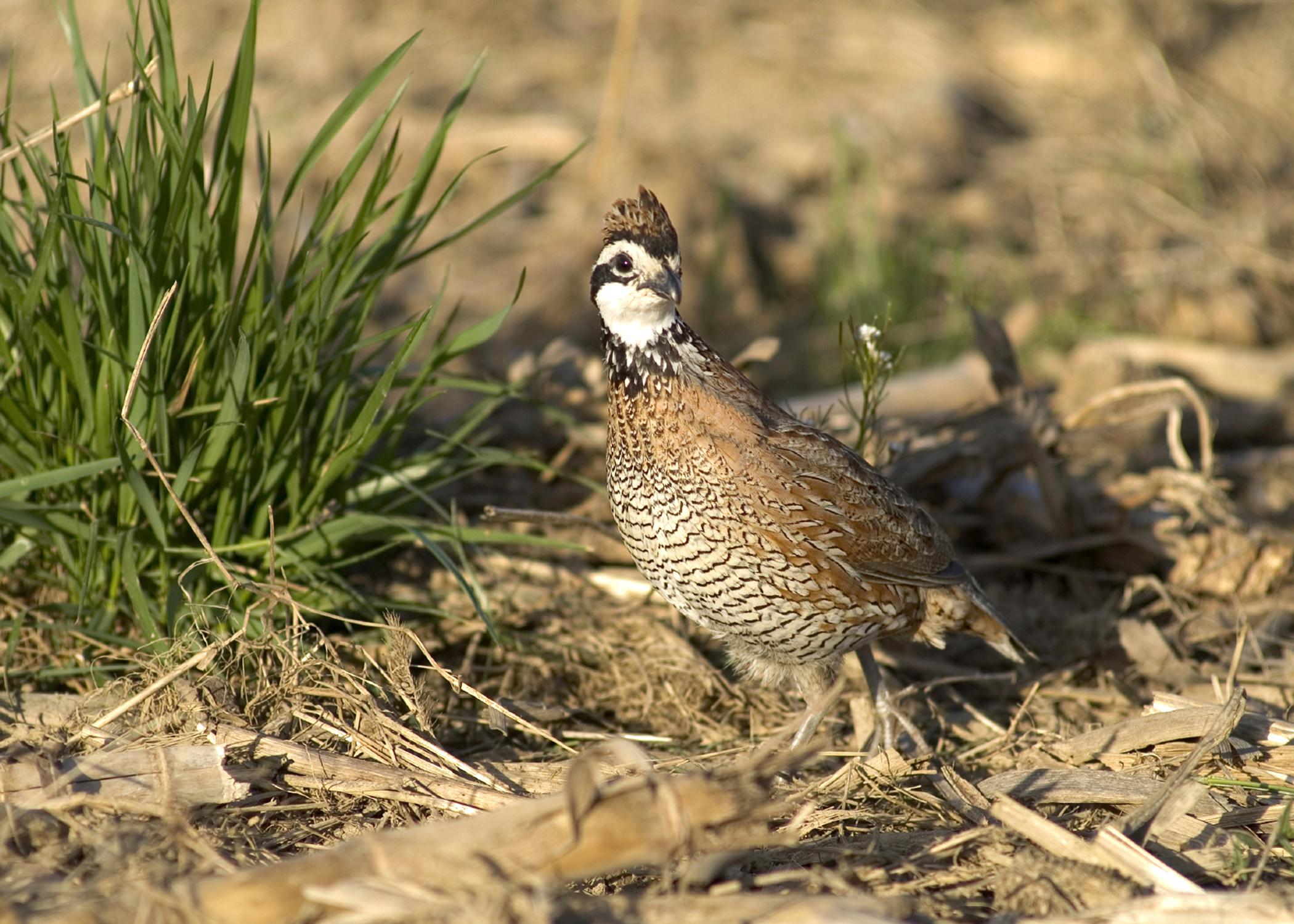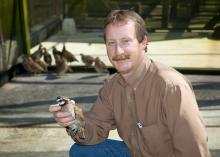Information Possibly Outdated
The information presented on this page was originally released on November 13, 2013. It may not be outdated, but please search our site for more current information. If you plan to quote or reference this information in a publication, please check with the Extension specialist or author before proceeding.
Buffers benefit bobwhite area quail and songbirds
MISSISSIPPI STATE – Quail season will open in Mississippi Nov. 21 with relatively low bird populations, but new agricultural practices may provide a boost for the bob-white-whistling game fowl.
A recent Mississippi State University-led study found that implementation of an agricultural initiative known as Conservation Practice 33 - Habitat Buffers for Upland Birds or CP33 increases fall populations of bobwhite quail.
The U.S. Department of Agriculture first introduced CP33 in 2004. It provides incentives for establishing 30- to 120-foot-wide buffers of diverse native grasses and herbs along the edges of crop fields to provide habitat for bobwhites and other grassland birds.
Scientists in the MSU Forest and Wildlife Research Center coordinated wildlife biologists from 14 states in the CP33 study, said wildlife ecologist Wes Burger, who serves as associate director of the research center and the Mississippi Agricultural and Forestry Experiment Station. Their goal was to monitor differences in bobwhite and upland songbird densities and vegetation characteristics in 600 buffered and 600 unbuffered agricultural fields.
“This was the first conservation practice designed specifically to help meet recovery objectives of a large-scale wildlife conservation initiative,” Burger said. “It was also the first to require a wildlife monitoring component as part of its practice.”
Results from all 14 states indicate CP33 works at restoring bobwhite quail populations and increases the number of local bobwhite coveys. In the fall and winter, bobwhites forage, roost and travel in coveys, which are social units of 10 to 15 birds.
“We observed 50-110 percent greater fall bobwhite covey densities on CP33 fields across all states,” Burger said. “At the current enrollment of 245,131 acres, the study estimates the practice has added about 31,000 quail coveys to the landscape annually.”
If program participation rose to the current cap of 500,000 acres, about 63,000 coveys would be added. At an average of 12 quail per covey, that would mean about 750,000 more quail in the fall, Burger said.
The bobwhite quail was not the only species to benefit from CP33 implementation. Priority songbirds, such as dickcissels and field sparrows, also benefitted from the practice. In Kansas and Oklahoma, wildlife scientists found ring-necked pheasants were more abundant in grass-buffered crop fields.
“Buffers around agricultural lands provide year-round habitat for bobwhite quail and grassland song birds,” Burger said. “This study clearly demonstrates that measurable wildlife benefits can be achieved through strategically implemented conservation practices in working landscapes.”
As a component of the study, scientist found that removing low-yielding crop areas from production had minimal or positive economic impact on whole-farm profitability.
“Farming is a business, and as a business, the property must be productive and profitable for producers,” Burger said. “Conservation practices like CP33 make relatively small changes in primary land use and provide essential wildlife habitat in productive, working agricultural landscapes. If buffers are strategically implemented in low-yielding portions of fields, they can actually increase whole-field profitability.”
Large-scale monitoring efforts not only provide valuable data on wildlife response but also demonstrate the effectiveness of the conservation practice.
“The data across a wide range of states helps managers and policy makers further refine practices that will increase wildlife habitat, an important factor considering the fragmentation of much of the bobwhite quail range,” said Kristine Evans, former CP33 study project manager and assistant regional data manager with the U.S. Fish and Wildlife Service Inventory and Monitoring Initiative.








